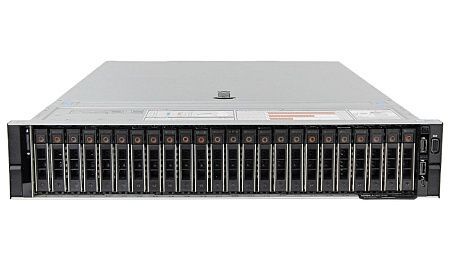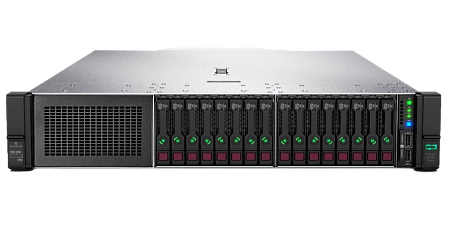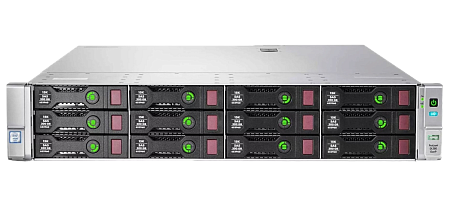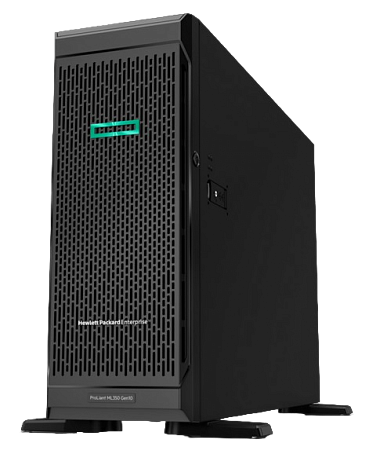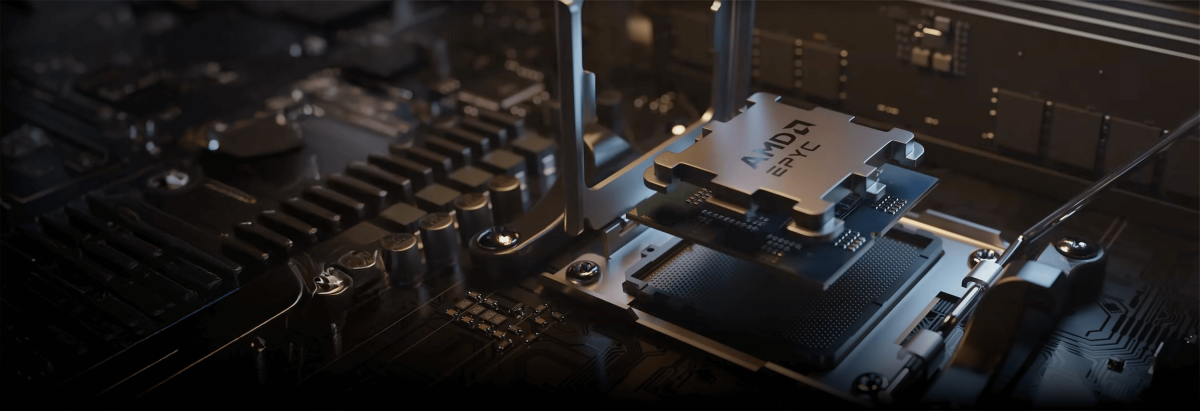Servers can be used in various companies and firms. The server functionality is quite wide. It is installed to store files, perform backups and provide remote access to necessary data.
Another function of the server is storing files from CCTV cameras. There must be a specially equipped system for this purpose. This is a very convenient option, since a specially equipped server can store data for a long time, ensuring reliability and security.
Selecting OS for the server
In order for the equipment to work successfully, it is necessary to select the most optimal version of the operating system, since it will act as an interface for the server. When choosing server operating systems, you should take into account your main purposes, capabilities and finances.
A good option could be the operating system from Apple – macOS Server. It uses the administration function to manage users and also gives the ability to use server programming. An alternative option is Linux OS such as:
- Ubuntu Linux,
- Red Hat Enterprise Linux.
Another option is Windows Server. This server OS is considered an enterprise-class system. It provides a large number of capabilities for managing the network, various applications and data stored on the server.
Thus, when choosing, it is necessary to rely on the required functions of the server, as well as on your financial capabilities.
Choosing video surveillance software
Choosing video surveillance software depends on a large number of factors, and therefore takes quite a long time.
This issue is quite controversial, but there are still three important recommendations that should be taken into account:
- Pay attention to the software. The software is used for situational and video analytics. High-quality software will allow you to timely detect and eliminate existing errors or problems in the system. This simplifies the work of the server, and also greatly helps the work of the company's employees.
- You should not choose software that is an addition to technology. Although this software is inexpensive, it is unreliable and of poor quality.
- The software must support ONVIF. This protocol allows the software to be compatible with a wide range of equipment.
We advise you to take these tips seriously.
Calculation of video surveillance server characteristics
There are no universal servers for video surveillance. In this case it all depends on certain factors:
- Security system requirements;
- Number of cameras;
- Terms of use;
- Equipment parameters.
These indicators are very important. For example: if you plan to use the server only for recording video streams, then a powerful processor is not required. Another example: processor power also depends on the number of cameras (the more IP objects that require review, the more powerful it is recommended to choose a processor).
Selecting servers for a video surveillance system
If you need to organize a large-scale system of CCTV cameras, then when choosing the necessary equipment, it is recommended to pay attention to the following points:
- hard drive space capacity,
- RAM volumes,
- processor performance level.
The number of hard drives varies depending on the size and features of the system. You must also take into account the fact that the equipment must be able to process data from all cameras.
There are also parameters that define the possible scaling function (do not need to dedicate additional servers). Such parameters include:
- maximum capacity of the embedded disk subsystem,
- form factor,
- maximum number of processors.
Video surveillance servers can be considered as one of the subtypes of multitasking servers. The difference is that video surveillance servers have less RAM. Moreover, their peculiarity is that they focus on the power of the purchased processor.
External storage systems
A hard drive inside a PC or a specially equipped RAID array for a server is the basis for external data storage. If we consider systems at various levels of enterprises, then it is necessary to mention three main technologies for the organization:
- DAS: lowest cost of all. Main characteristics – fast speed of information exchange between the storage and server, ease of deployment and administrative activities;
- NAS: it is not very expensive (allows to distribute resources among a team of employees or users who do not have special skills). This technology performs the function of a file server.
- SAN is a specially dedicated network connecting devices that store the necessary information and application servers. This technology provides a high level of reliability of access to information, as well as its centralized storage.
Trying to save money on external storage systems is not recommended, since the correct choice of such system guarantees the safety and security of information received from cameras.
Camera control systems for OS Windows
In this case, you need to pay attention to the following features when choosing camera control systems:
- Ease of access to data on the server;
- Simultaneous recording of video streams from several cameras (including cameras located remotely);
- Stability, reliability and uninterrupted operation;
- The maximum time for which files can be saved.
If you are looking for a data control system for Windows, then you should pay attention to software from Milestone. Its main task is to manage video files from cameras in systems containing up to 48 IP devices under the control of one server. This software allows you to:
- search the archive,
- view files online,
- play recordings,
- analyze motion using detectors,
- export individual parts of files.
Another common option is software from AxxonSoft. It supports any camera that is ONVIF compatible. Generally, this software can be used for more than 1400 models of CCTV cameras.
Camera control systems of the Linux OS
The most suitable option is considered to be ZoneMinder, specially designed to support a wide range of cameras from various suppliers. The availability of source code that gives an opportunity to adapt the software to certain objectives and goals is the main advantage of ZoneMinder.
Selecting equipment for a video surveillance server
Next, we will consider the most important elements of the server that you need to pay attention to:
- Switches;
- Hard drives and their number;
- Motherboards;
- Video cards;
- Processors;
- Power supplies;
- Cooling system;
- RAM;
- Controllers.
There are only general recommendations for selection that must be taken into account, since video surveillance systems have many nuances. Our specialists are ready to offer advice on any issues, as well as to assist in choosing a server at an affordable price.
How to choose a power supply for a video surveillance server
In this case, you need to rely on the number of SATA devices and the power of the entire server. Using a special calculator that calculates the power of the power supply is very useful in this case. The site specialists can also help in choosing a power supply unit.
Based on the total number of drives, simple calculations can be made to understand how many SATA connectors are needed.
How to choose a motherboard for a video surveillance server
When choosing a motherboard, you need to select the option that offers the system auto start function. Operation is activated after energy is supplied to the input of the power supply units. This function allows the server to turn on automatically when there is a power outage at the facilities.
It is important that there are enough SATA ports on the board for HDD and SDD.
How to choose video cards for servers
Here you need to pay attention to the following parameters:
- Passive cooling. Its presence is necessary to reduce the heating level of the elements, as well as server noise.
- The connector types must match the motherboard.
- Properly selected connectors for connecting monitors. If the connectors do not fit, you can buy inexpensive adapters that can solve this problem.
It's also worth noting that a video card may not be needed if the processor is already equipped with an integrated kernel.
How to choose a controller for video surveillance systems
Choosing the controller is also a very important process, since it is an integral part of the system that controls all cameras. We recommend paying attention to the presence of functions that are of greatest importance for a particular object. These functions include:
- Control multiple cameras from one screen;
- Audio support for certain cameras;
- A tool for saving snapshots of video streams;
- Increasing or decreasing the scale.
These functions play an important role in organizing the correct operation of the entire system.
Features of processor selection
CCTV servers require a powerful processor that can withstand high loads from all cameras in the system. Thus, the more devices are connected to the server, the more powerful the processor model should be selected. It is also worth remembering that the higher the efficiency of the processor, the more RAM it will require to operate.
Features of RAM selection
The higher the power of the main processor, the more RAM will be required. The amount of RAM depends on the bitrate (The higher the bitrate, the larger amount of RAM is needed).
Features of HDD selection
It is recommended to initially buy wear-resistant hard drives, since the load on the server will be high. The number of HDDs is selected individually. Their number will depend on the expected load (the larger the number of cameras, the more memory the information will occupy). The load should be distributed as evenly as possible between the hard drives. Moreover, they should not be used repeatedly for data storage and backup.
Specialists from Newserverlife.com will help you make the right choice.
Features of cooling system selection
A cooling system is necessary in any case, since the server will heat up due to constant operation. It is very important to take into account the presence of filters that protect the device from dust. The presence of at least two fans installed in the server case. The first is responsible for blowing in fresh air, and the second for blowing out hot streams.
How to choose switches for video surveillance servers
The switch allows you to configure a surveillance system to output all data from cameras to the surveillance post. Using a switch, data is captured and stored on the server. The best option is to choose the best turnkey system, which will contain all the components that meet the client’s requirements. Switches make it possible to combine cameras into one system.
The following features are available:
- Some models help with equipment management.
- Some switches are capable of monitoring power supply to tracking devices.
- Information that is displayed on the screen can be recorded by the recorder if it is connected to the switch.
Backup power
The long-term and reliable operation of the server largely depends on a properly selected uninterruptible power supply. In the absence of backup power, there is a high probability of partial or complete data loss. When choosing a backup power source, you need to pay attention to the following points:
- the total power of devices that connect to the network,
- battery life of the device,
- battery quality.
First, the power of the cameras is calculated. Next, UPS suitable for this indicator is selected.
Since additional objects may be installed during operation, it is recommended to select devices with a reserve.
Server assembly for video surveillance systems
During the assembly process, it is important to take into account the following points:
- Cooling fans must be reliable and effective.
- To optimize the system and free up work space, hard drives are connected into one RAID array.
- Alternating hard drives with each other will allow you to rationally distribute data flows.
It is very difficult to cope with the assembly on your own. In any case, it will take a lot of effort and time. The best solution would be to contact specialists who work directly with video surveillance servers. They are always ready to help in choosing the right equipment, based on customer requests.
Besides, by writing down the basic requirements in special calculators, which are very popular today, you can find out the appropriate equipment in advance.
Specialists of our company are ready to help you purchase the server and select the necessary server configuration for any required task.





















